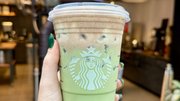Article
It's easy being green: How to make your restaurant eco-friendlier
Restaurants embracing the green movement may have an easier time staying in the black.

August 30, 2011
Restaurants embracing the green movement may have an easier time staying in the black, according to a recent survey from SCA’s Tork brand that polled more than 6,000 Americans from 2009 to 2011.
The survey asked participants to assume two restaurants were exactly the same, but with one exception – one establishment had a clear focus on environmental and social stewardship. Fifty-three percent of adults said they would choose this restaurant over another that did not possess the same qualities. And 23 percent of American adults who chose the more responsible restaurant would do so regardless of wait time or distance.
The study found that not only are customers willing to pay a little extra to eat in a green restaurant, 47 percent said they would expect it.
"Restaurants not embracing green are missing out on potential cost savings and sales increases," said the expert on green living,” according to Teena Hammond, editor of ProudGreenHome.com. "As the world turns progressively more environmentally aware, customers are making their own lives and homes eco-friendly."
They are also seeking out businesses that serve their communities in the same way, Hammond said.
"A green restaurant that, for instance, serves farm-to-table food will attract attention from these customers. And restaurants that incorporate energy efficient lighting, appliances and building techniques will save on their costs and energy bills," she said.
Below are five ways operators have embraced the green movement:
1. Deliver green
One way to help the planet and your bottom line is to make deliveries on foot, bike or in hybrid vehicles. Instead of using energy-guzzling cars, all of Pizza By Certé deliveries are by foot or hybrid truck. Another environmentally friendly pizza chain that delivers via hybrids is Pizza Fusion, which also builds all its stores to LEED certification standards.
Domino's franchisee Nelson Hockert-Lotz, who owns two stores in New Bedford, Mass., is on board, too. He has two hybrid vehicles in his five-car fleet of delivery vehicles and plans to slowly replace the other three with hybrids.
"It's good for the planet, and we've reached a time where what's good for planet is usually good for business," Hockert-Lotz said.
The hybrids get about 50 miles to the gallon, which ends up saving the stores a lot in gas costs. Plus, the drivers prefer the Prius and actually arrive early for their shifts since the first driver on the clock gets first car pick.
"It's always great when people are getting to work early," Hockert-Lotz said.
Although hybrid vehicles are still the minority for delivery vehicles, Hockert-Lotz there's no question the industry is headed in that direction.
"And I think it's a necessary direction, and that's why we've made that decision now," he said.
2. Light it up
One of the easiest ways for a restaurant to incorporate green is by replacing traditional light bulbs with energy-efficient compact fluorescent lights (CFLs), light-emitting diodes (LEDs) and halogen incandescent, Hammond said.
"These lights are more efficient than traditional ones, produce less heat to reduce air conditioning costs and also uses less energy," she said. "The bulbs also last significantly longer than incandescent lights, producing less waste for landfills."
According to the U.S. Dept. of Energy, rapid adoption of LED lighting in the U.S. over the next 20 years would reduce electricity demands from lighting by one-third, eliminate 258 million metric tons of carbon emissions, eliminate the construction of 40 power plants and create financial savings that could exceed $200 billion.
KFC recently opened a new location in Indianapolis built using elements that follow the LEED (Leadership in Energy and Environmental Design) certification process. The new building that uses LED lighting is designed to use 25 percent less energy and water than a conventional restaurant and is being used as test model for future stores.
3. Grow your own garden
Top chefs throughout the country are growing their own herb and vegetable gardens to provide fresh produce to their customers, Hammond said.
"This creates a smaller carbon footprint to get the food to the restaurant, and encourages restaurateurs to learn more about organic gardening techniques, thereby reducing the amount of pesticides in the food served," she said.
Roberta's Pizzeria in Brooklyn has a garden behind one of the restaurants via two repurposed shipping containers turned greenhouse. It grows herbs, tomatoes, eggplants and greens. Fig, apple and peach trees also grow throughout the yard. The restaurant gets about 20 percent of its produce from the backyard and supplements the rest from local famers.
4. Reduce paper waste
Pizza by Certe, which is a New York City green certified pizzeria, is dedicated to the green movement. All its utensils and paper goods are made from recyclable materials and are biodegradable, and its crystal clear drinking cups and containers are made from a resin derived entirely from plants.
Its also banned styrofoam, which is found in most restaurants in the form of take out boxes, soup and coffee cups.
“Get rid of the Styrofoam, which never biodegrades and switch to recycled paper products,” said P.J. Jordan of Pizza by Certe. “One average restaurant using only recycled napkins could save 20,000 trees per year.”
5. Package smarter
Pizza By Certé, along with about 50 pizzerias, use Greenbox, a pizza box made from 100 percent recycled material that also breaks down into serving plates and a storage container for leftover pizza.
"(The industry is) mowing down tree after tree for boxes that are used for 45 minutes and then thrown away," said William Walsh, CEO of the Ecovention, the company that makes the boxes. "So I thought, there's a lot of material to work with (on a pizza box); I wanted to make something intuitive, easy to use, and that had some value. We made it multifunctional so it was more than just a delivery device."
Greenbox is on track to sell 5 million boxes over the next year, pricing is in line with other pizza boxes on the market, according to Jennifer Wright, CFO of Ecovention.
Rubio's Fresh Mexican Grill also found a way to implement greener packaging. Last year, it rolled out 100 percent recycled containers for its salads. The chain sells about 460,000 water bottles a year, which, thanks to a company called Bottle Box, are converted into salad bowls and lids. It not only keeps the bottles from ending up in the ocean but also saves about 37 cubic yards of landfill space, according to said Ralph Rubio, chairman and co-founder of Rubio's.
"We understand that of the 15 billion pounds of plastic produced each year in the U.S., about 10 percent of it ends up in the sea," he said.
To be a part of the solution, Rubio's also has a green-minded website to share its plans and progress in using recycled, compostable, reusable packaging and printed materials
Clickhereto see a slideshow of "green" photos.
In what ways is your restaurant green? Leave your comments below.
cover photo: Anthony Falco












